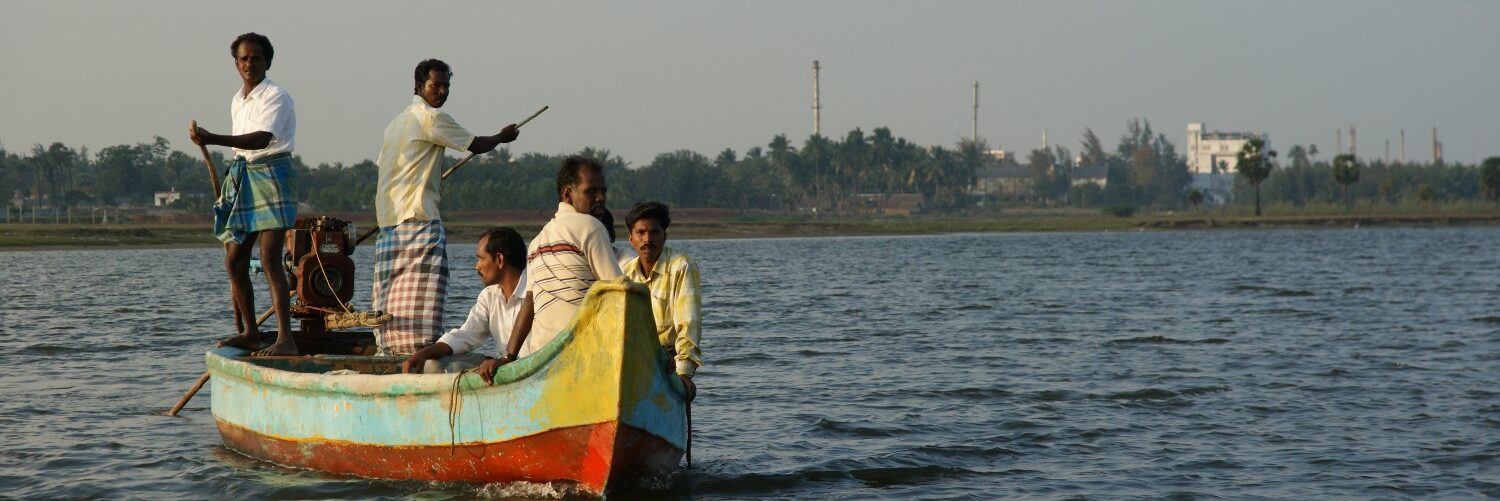CHENNAI, 2 May, 2007 — Japan exported nearly 2000 tons of trash, not including e-waste, to India in four years between 2003 and 2006. It was also among the largest exporters of toxic ships, having sent 70 ships in four years for breaking at the infamous shipbreaking yards of Alang. Chennai-based campaign group Corporate Accountability Desk today released results of an investigative survey that collated data on Japanese exports to India to coincide with the Global Day of Action Against Japan’s toxic dumping on Asia. Citizens’ groups from several Asian countries participated in the Day of Action. Chennai residents and organizations, including Exnora International, also visited the Japanese Embassy on Cenotaph Road to deliver a poster that read: “Asia is Not Japan’s Waste Colony: Stop Toxic Trade” to the Embassy officials. The Japanese embassy refused to accept the memorandum.
The investigative report released today revealed that Japan exported at least 270 tons of toxic wastes, including prohibited items such as zinc ash, lead acid battery wastes and copper cables coated with the poison plastic PVC. The Basel Convention on Transboundary Movement of Hazardous Wastes prohibits the export of toxic wastes from rich countries to industrializing nations. Indian laws and orders of the Supreme Court too prohibit the import of hazardous wastes into India.
The survey also revealed that commodities prohibited for trade under other international agreements such as the Stockholm Convention on Persistent Organic Pollutants (POPs) too have been freely exported by Japan to India . Specifically, Japan exported more than 500 tons of DDT and 20 tons of capacitor fluid containing polychlorinated biphenyl, a carcinogen and a banned chemical.
While the quantum of imports into India is far less than that into Japan’s waste colonies like the Philippines, things could change with the new economic agreement that Japan and India are currently negotiating, activists warn. “If the agreements negotiated by Japan with the Philippines and Thailand are anything to go by, the India-Japan Comprehensive Economic Partnership Agreement that is currently being worked on in secret by the two Governments will open the floodgates to Japan’s municipal, medical and hazardous wastes,” said Nity anand Jayaraman, a member of the international coalition Global Alliance for Incinerator Alternatives (GAIA).
Faced with an over-consumptive lifestyle, and very little land space, the Japanese are desperate for new places to dump their wastes in. Touting its expertise in recycling, Japan has arm-twisted several Asian countries into negotiating secret economic agreements that include clauses to liberalise waste imports into Asian countries by branding the waste as “recyclable goods.”
“The Economic Agreement is bad news. The Commerce Ministry has refused to part with any meaningful information regarding the ongoing negotiations claiming secrecy. Through Right to Information, we have found that no consultations will be held with public. However, FICCI and CII will be consulted. So much for democracy,” said Madhumita Dutta of Corporate Accountability Desk.
The group has demanded that the negotiation should not liberalise waste trade and it should be opened up for public participation. “If industry can be party to the negotiations, I don’t see how parliamentarians and the citizens of the country can be kept in the dark”, said Dutta.
| ITC Code | Commodity Name (Wastes) | 2003 | 2004 | 2005 | 2006 | Total |
| Quantity in Kgs | ||||||
| 26201900 |
Zinc ash and residue |
20,000 | 24,000 | Nil | Nil | 44,000 |
| 74040012 | COPPER SCRAP (Including PVC coated copper cables) | 32,000 | 144,000 | 1,76,000 | ||
| 85481010 | Lead acid battery scrap | 290 | 290 | |||
| 85481090 | Other waste and scrap of lead acid batteries | 120 | 2,070 | 2,820 | ||
| 85481000 | Waste and scrap of primary cells, batteries etc. | 100 | 100 | |||
| 38256900 | Wastes from Organic and Allied Industries | 880 | 3,080 | 3,960 | ||
| 78020090 | Lead scrap | 43,000 | 43,000 | |||
| SUB TOTAL OF HAZARDOUS WASTES | 2,70,170 | |||||
| 39159030 | Waste scrap of acylic polymers and methylacrylic copolymers | 6,69,760 | 2,07,000 | 5,43,400 | 14,20,000 | |
| 39159010 | Waste parings and scrap of polypropylene | 24,490 | 21,200 | 45,690 | ||
| 39151000 | Waste parings and scrap of polymers of ethylene | 147,000 | 1,47,000 | |||
| 39159029 | Waste and scrap of vinyl acetate | 43,000 | 4,49,000 | 4,92,000 | ||
| 39159049 | Waste parings and scrap of epoxide resins | 3,42,770 | 3,42,770 | |||
| TOTAL OF HAZARDOUS AND OTHER WASTES | 19,17,638 |
|||||
| 89080000 | Ships for breaking (Number of ships/year) | 30 | 10 | 10 | 20 | 70 |
| ITC Code | Commodity Name (Hazardous Commodities) | 2003 | 2004 | 2005 | 2006 | Total |
| Quantity in Kgs | ||||||
| 29310010 | Organomercury compounds | 2,36,700 | 1,16,600 | 94,540 | 4,47,840 | |
| 29036229 | Other DDT | 67,080 | 4,50,990 | 5,18,070 | ||
| 38081025 | Methyl Parathion | 2,250 | 2,250 | |||
| 38249033 | Capacitor fluids, PCB type | |||||
Corporate Accountability Desk
42A, 1st Floor, 5th Avenue, Besant Nagar, Chennai 90
